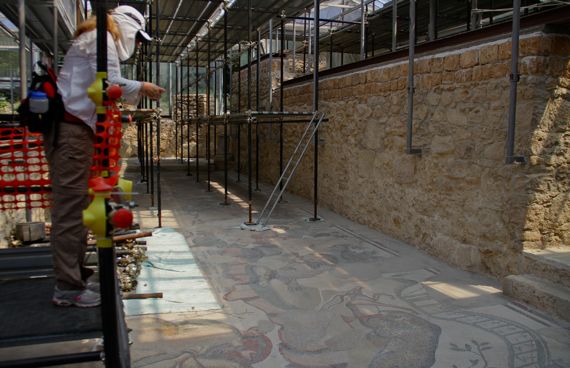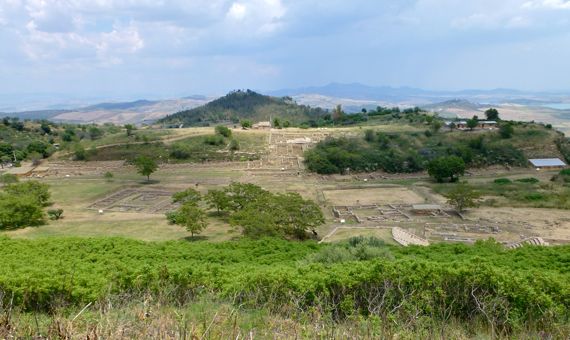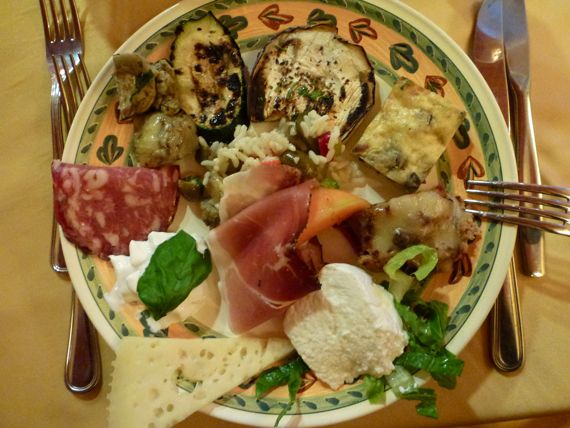Right near Piazza Armerina
Friday, 27 May 2011

Always, the tricky thing about archaeological finds is “saving” them. Stabilizing whole residential complexes of wall bases and Roman mosaic floors here at the Villa Romana del Casale is a major engineering project. I’m still amazed that conservators let you walk on some of the floors—on mosaic fragments. However, huge protective roofs and elevated walkways for the tourists are transforming this hillside into what looks like a series of greenhouses from afar. The corollary is that often shadows make study of the figures and designs in the mosaics, umm, difficult. And superheated.

The lower zone of Morgantina includes the agora, stoa, granaries, and stores—a wide variety of special-use architecture, while the long-ago Greeks (well, their slaves) built residential architecture on the distant hilltop and the one I’m standing on, overlooking the core area of the settlement. The size of the bouleterion, or steps where citizens sat when they met to deliberate about community business, indicates Morgantina had a substantial population—and this was the mid-400s BC. And, yes, that’s a theater just peeking out from the vegetation in the right foreground.
Note how from this city, the residents could monitor activity over a wide area below. Note that their gleaming buildings could likewise be seen from a huge surrounding area.

Here’s a sample of the good eats we’ve been enjoying—the antipasti we had tonight—two meats, three cheeses, an egg omelette(?), a cold rice salad, three veg, and a breadcrumb-stuffed red pepper. The meatloaf that arrived several courses later was tender and outstanding, with just a tiny bit of finocchio selvatico (wild fennel) as part of the flavoring, I was told. I guessed mint, but that’s probably because I know the Italian for it (menta), and I thought the flavor similar.
My vocabulary widens—slowly.
I am full. And that is all. (Hat’s off to KW for this style of sign-off.)